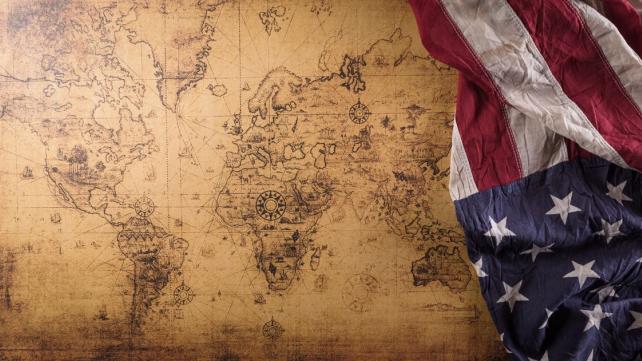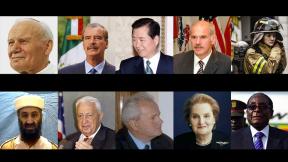
Every October, as debates swirl around the legacy of Christopher Columbus, the focus often centers on his brutality toward Indigenous peoples and the colonial violence he unleashed. Yet another dimension of his voyages remains largely obscured: Columbus’s deep entanglement with the Islamic world. Far from being a neutral intrepid explorer, Columbus was shaped by, and reactive to, the geopolitical dominance of Islam, most notably the Ottoman Empire. His journey westward was not focused on discovery but rather a strategic attempt to circumvent Muslim power and forge a Christian alliance against it.
When we consider the definition of islamophobia, an irrational fear or hostility toward Islam and Muslims, it becomes evident that Columbus embodied this mindset. More than that, he played a pivotal role in transplanting this fear to the lands that would become the Americas. In the 15th century, Islam was the dominant force shaping global trade, politics, and culture. Only two years after Columbus was born, the Ottoman Empire, under Sultan Mehmet II, conquered Constantinople in 1453, transforming the Christian capital into the thriving Muslim city of Istanbul. This seismic event reverberated across Europe, marking the symbolic fall of Christendom’s eastern stronghold and igniting a wave of grief, fear, and vengeance among many European Christians.
Columbus was raised in this turbulent world of loss, anxiety, and resentment. The fall of Constantinople was a formative trauma for Christian Europe, and for Columbus personally, yet we never learned this in our history books. As Alan Mikhail argues in God’s Shadow: Sultan Selim, His Ottoman Empire, and the Making of the Modern World, the Ottoman Empire was not an insignificant backdrop to Columbus’s voyages but a central antagonist. Muslims controlled the Silk Road and the spice trade, and their dominance meant that Christian Europe had to pay tribute, literally and symbolically, to Islamic powers to access the riches of the East. This geopolitical chokehold led explorers like Columbus to scheme up alternative routes that would bypass Muslim-controlled territories entirely, allowing Christian Europe to trade, expand, and wage ideological war without relying on or enriching its Islamic rivals.
Marco Polo, Mongols, and the Dream of a Christian Alliance
Columbus’s ambitions were shaped by the writings of Marco Polo, whose accounts of the Mongol Empire painted a picture of a powerful civilization open to Christianity. Polo suggested that the Mongols were ripe for conversion and could become allies in a grand crusade against Islam. This vision captivated a young Columbus. He imagined a geopolitical pincer movement where Christian Europe from the west and converted Mongols from the east could attack the Muslims from two fronts. But there was a problem. The traditional route to China passed through Muslim lands, particularly those controlled by the Ottomans. Columbus’s solution was radical: why not sail west to reach the East? Thus, his so-called legendary voyage of discovery was not really about proving the Earth was round or finding spices and gold; it was a plan to bypass Islam entirely. He hoped to establish direct contact with the Mongols, convert them to Christianity, and enlist them in a holy war or crusade against the Ottomans.
However, it was not only the Ottoman Muslims who faced the wrath of Christian Europe. Muslims in Iberia were also targets of an ominous campaign to eradicate Islam from the continent. The fall of Granada in 1492, the last Muslim stronghold in Spain, marked the end of nearly eight centuries of Islamic rule in Al-Andalus and symbolized a decisive Christian victory. This momentous event played a pivotal role in shaping Columbus’s trajectory. As a relatively obscure navigator with limited political influence, Columbus lacked the means to finance his ambitious voyage. But with the conquest of Granada, vast Muslim wealth and resources were seized by the Catholic Monarchs, Ferdinand and Isabella.
Columbus’s presence at the Fall of Granada in 1492 was no coincidence. This event marked the end of Muslim rule in Iberia and the triumph of Catholicism in the Iberian Peninsula. With the defeat of the Nasrid dynasty, Muslim wealth and infrastructure were absorbed into the Spanish crown. It was from this newly acquired capital, extracted from a defeated Muslim polity, that Columbus secured the funding for his westward expedition. Ironically, the ships, navigation tools, and capital that enabled Columbus’s journey were, in part, derived from the spoils of Islamic civilization. The very resources used to “discover” the New World were extracted from the defeat of Muslims in Spain. Columbus’s voyage was thus a continuation of the Reconquista, a transatlantic extension of Europe’s centuries-long war against Islam.
Islam in the Americas: A Hidden Legacy
Columbus’s arrival in the Americas only months later opened the floodgates for European expansion and the rise of Christian empires that could rival the Ottomans. Despite the possibility of acquiring more wealth and influence after Columbus’s journey, the Spanish were still concerned about what they perceived as the Islamic threat. They feared that Muslims from Iberia and Africa might infiltrate the New World and spread Islam. Laws were enacted to prevent Moriscos (Muslim converts to Christianity) and Africans from settling in the colonies. In a twist of fate, these efforts ultimately failed, undone by the very mechanisms they set in motion.
Crypto-Muslims—Moriscos who secretly practiced Islam despite forced conversions—found ways to enter Spanish territories, including the Americas. Though officially barred from colonial migration, many slipped through bureaucratic cracks or traveled under false identities. At the same time, enslaved Africans were forcibly brought to the New World, and among them were Muslims who carried their faith, memory, and cultural practices across the Atlantic. In this way, Islam was introduced to the Western Hemisphere, alongside Christianity. Realizing that Islam had infiltrated their colonial holdings, Spanish authorities intensified their campaign to root it out. The Spanish Inquisition, originally established in 1478 to enforce Catholic orthodoxy in Iberia, extended its reach into the Americas. Its mission was clear: identify and punish heresy, especially among suspected crypto-Muslims and Jews. Inquisitors scrutinized cultural practices, dietary habits, and linguistic traces that might reveal hidden Islamic beliefs. The very presence of Islam, however covert, was seen as a threat to the ideological purity of Spain’s imperial project.
The transatlantic slave trade, the displacement of Moriscos, and the porous nature of colonial administration ensured that Islam could not be fully erased. Instead, it survived in fragments, in oral traditions, in customs, in resistance practices, and in the quiet prayers of those who refused to forget.
Rethinking Columbus on Indigenous Peoples Day
On Indigenous Peoples Day, as we honor the resilience and wisdom of Native communities, we must also confront the full scope of colonial motivations. Columbus was no hero by any means, and he was not merely a misguided navigator or a ruthless conqueror. Columbus was a man shaped by religious animosity and geopolitical strategy. His voyage was an attempt to sidestep the Islamic world, avoid its power, and build a Christian empire in opposition to it. Understanding Columbus in this context reframes the “Age of Discovery” as an extension of the Crusades. Rather than an epoch of courageous exploration, it was driven by religious warfare, economic competition, and the desire to undermine Islam’s global influence.
The Americas became the stage for a new kind of conquest that sought to replace Islamic dominance with White Christian supremacy. This lens does not excuse Columbus’s atrocities, but it does deepen our understanding of the forces that propelled him. Islam was not on the periphery, but central to Columbus’s story. Yet in most conventional accounts of his voyage, Islam is scarcely mentioned, if at all. The presence, influence, and dominance of Muslim powers are often erased from the narrative, as if Islam did not exist or had no bearing on European exploration. This omission distorts the historical record, obscuring the fact that Columbus’s journey was deeply shaped by a desire to challenge the Islamic world. The legacy of that entanglement continues to shape the Americas in ways we are only beginning to uncover.
For Further Reading
- Alan Mikhail, God’s Shadow: Sultan Selim, His Ottoman Empire, and the Making of the Modern World
- Sylviane A. Diouf, Servants of Allah: African Muslims Enslaved in the Americas
- María Rosa Menocal, The Ornament of the World: How Muslims, Jews, and Christians Created a Culture of Tolerance in Medieval Spain
- Henry Kamen, The Spanish Inquisition: A Historical Revision
- Felipe Fernández-Armesto, Columbus
- Marco Polo, The Travels of Marco Polo








Add new comment